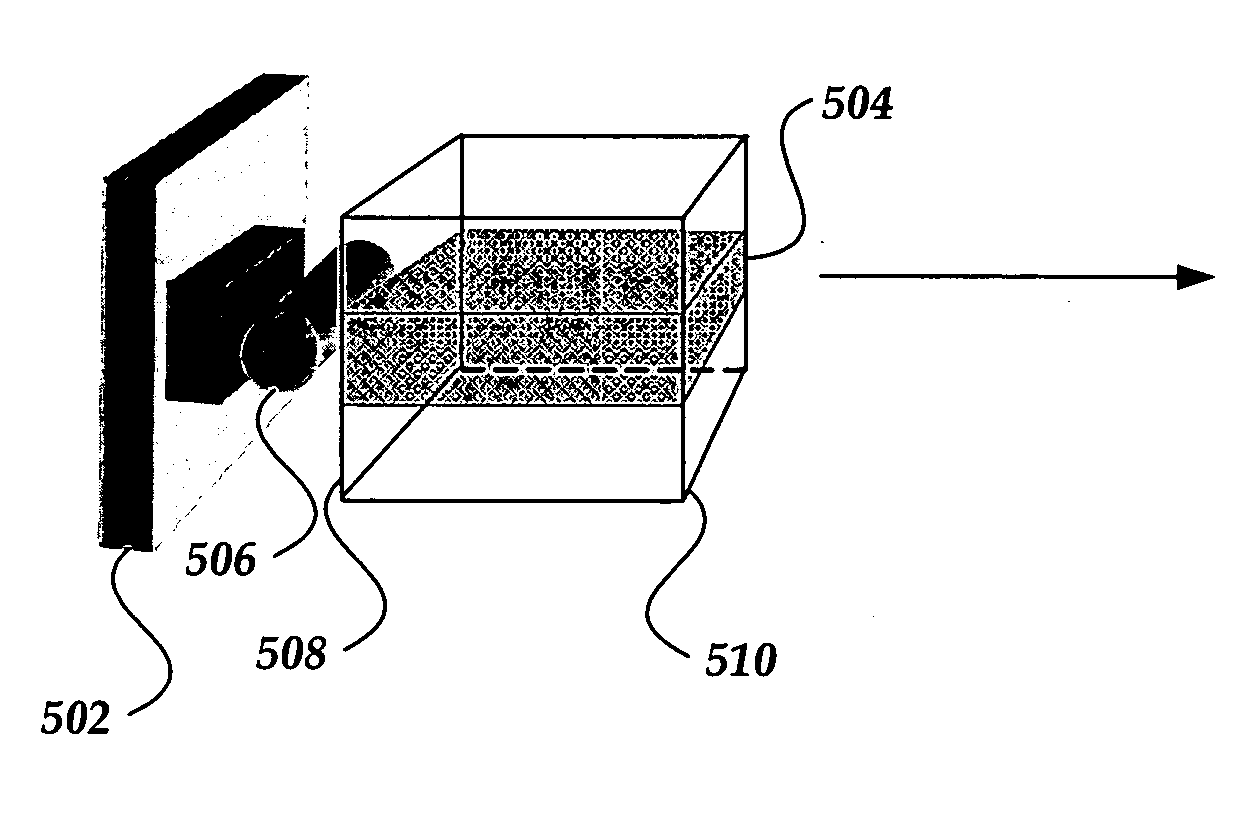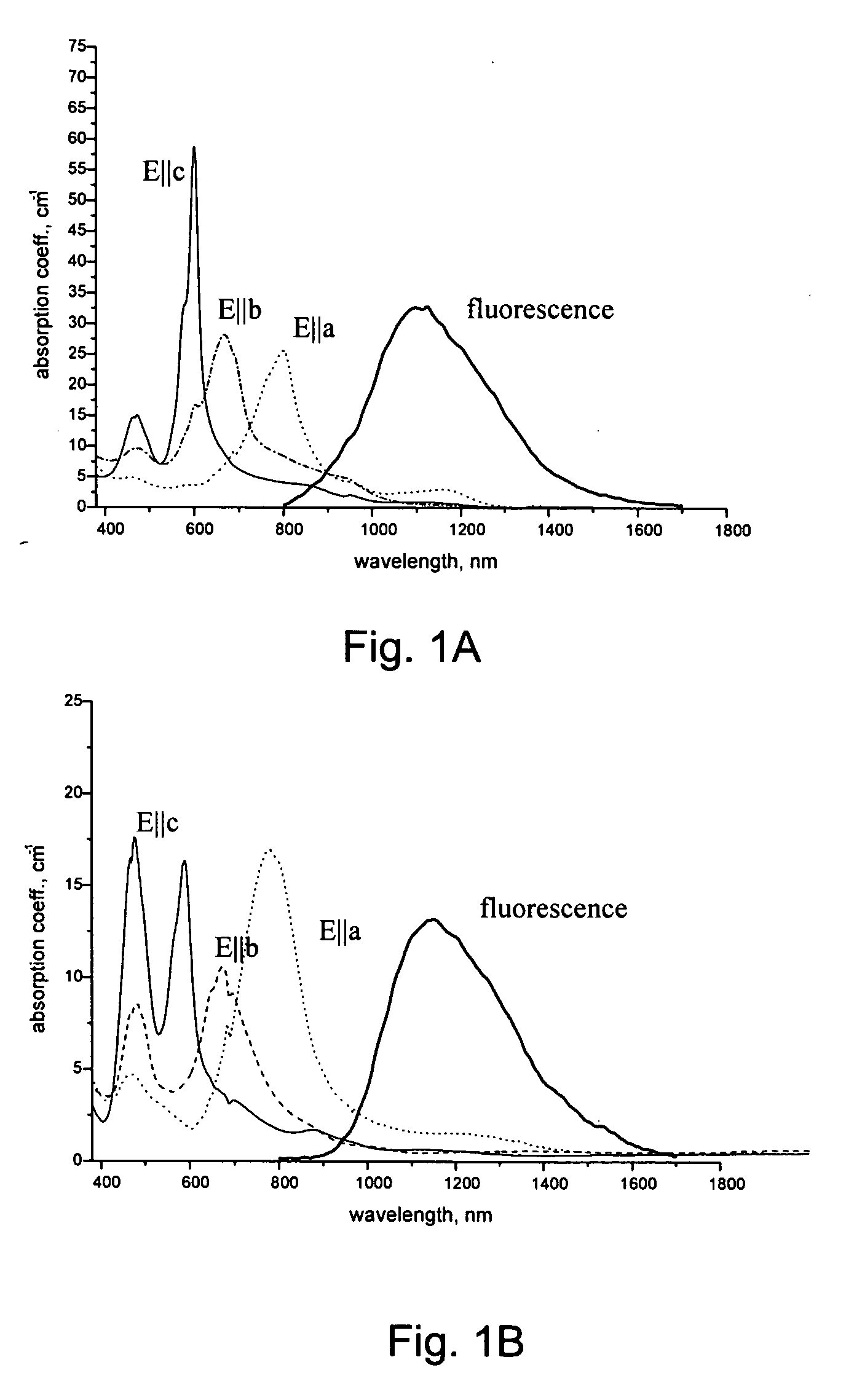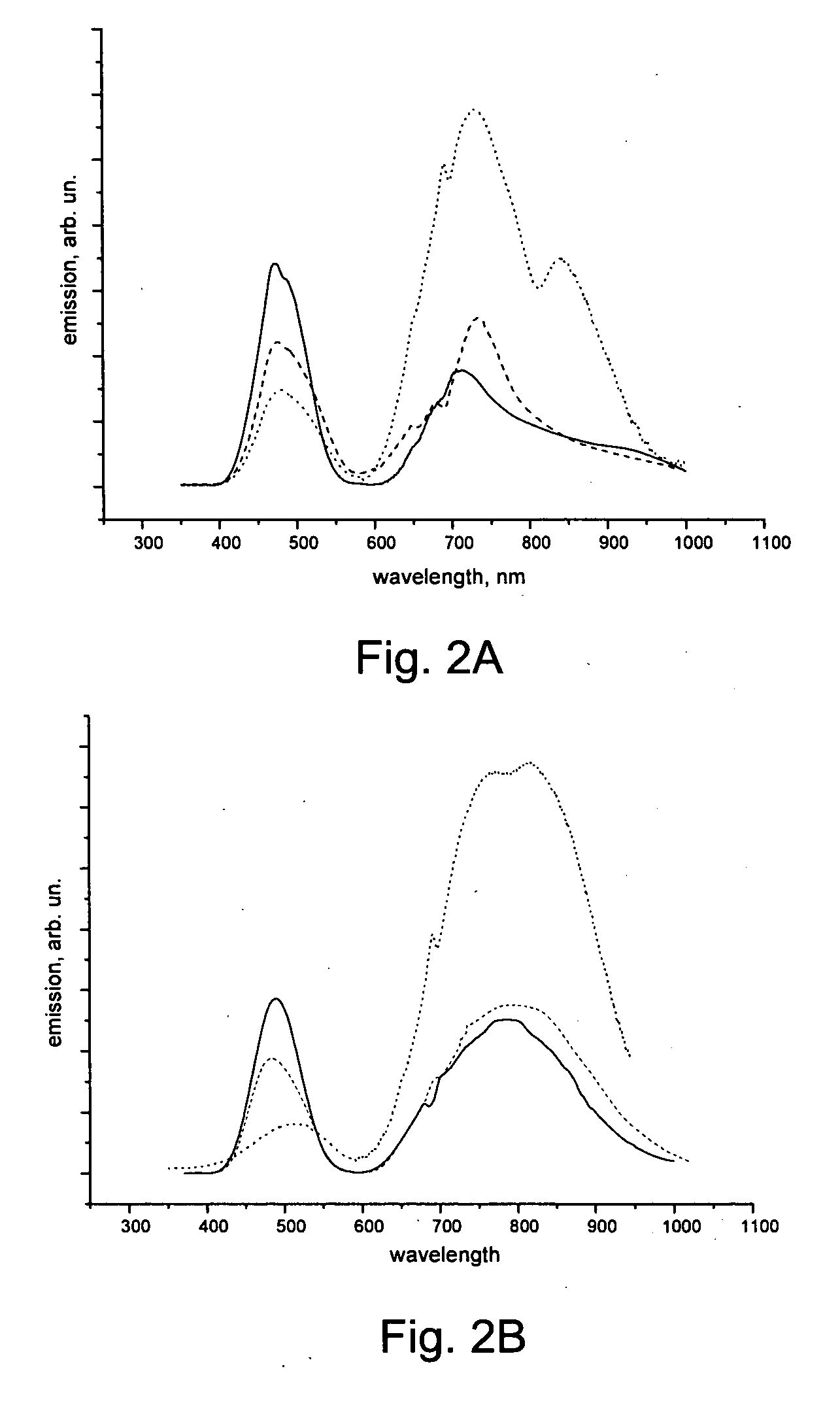Cr3+-doped laser materials and lasers and methods of making and using
a laser material and laser technology, applied in the field of cr3 +doped laser materials and lasers and methods of making and using, can solve the problems of limited lasers, ineffective flash lamps, and often unsuitable technology for small-sized integrated optical systems
- Summary
- Abstract
- Description
- Claims
- Application Information
AI Technical Summary
Problems solved by technology
Method used
Image
Examples
Embodiment Construction
[0025] A laser medium (i.e. material) can be a dielectric crystal doped with trivalent chromium (Cr3+) and characterized by a large Stokes shift and high quantum efficiency for the Cr3+ lasing ions. Such laser media includes Cr3+-doped materials of olivine-like or any other structure with specifically distorted octahedral sites occupied by Sc3+, In3+, (for example Li(Sc, In)(Ge, Si)O4), or any other ion of appropriate ionic radius to be substituted by a Cr3+ lasing ion. For example, the laser medium can be LiSc1-xInxGe1-ySiyO4 where 0≦x≦1 and 0≦y≦1. In one embodiment, x and y are not both 0. In another embodiment, x is 1 and y is 0 (i.e., LiInGeO4). In yet another embodiment, 0.1≦x≦1. In further embodiments, y is 0.
[0026] In some embodiments, the single crystal can have at least 0.05 wt. % chromium and may have at least 0.1 wt. %, 0.5 wt. %, or 1 wt. % chromium or more. In some embodiments, the single crystals have 1 to 5 wt. % chromium. Preferably, at least 50 mol. % of the chromi...
PUM
 Login to View More
Login to View More Abstract
Description
Claims
Application Information
 Login to View More
Login to View More - R&D
- Intellectual Property
- Life Sciences
- Materials
- Tech Scout
- Unparalleled Data Quality
- Higher Quality Content
- 60% Fewer Hallucinations
Browse by: Latest US Patents, China's latest patents, Technical Efficacy Thesaurus, Application Domain, Technology Topic, Popular Technical Reports.
© 2025 PatSnap. All rights reserved.Legal|Privacy policy|Modern Slavery Act Transparency Statement|Sitemap|About US| Contact US: help@patsnap.com



